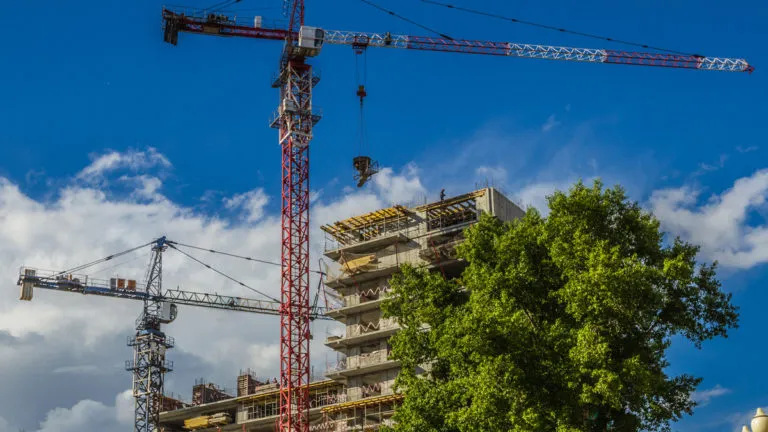No more social housing get-out clauses
Published: by Cecil Sagoe

As the Autumn budget announcements were only beginning to be digested a few weeks ago, the government released a consultation that contained substantial and largely troubling proposals for the future supply of social housing.
The consultation proposes a range of ideas to reform planning rules, including a welcome proposal to give councils more freedom over how they use their own land. This would allow councils to hold onto their land and use it to build desperately-needed social homes, where the current rules require councils to sell up as quickly as possible.
However, Shelter is chiefly concerned that this consultation is promoting government plans to extend the reach of the Permitted Development Rights (PDR) system.
As we commented in a recent Guardian article, we are deeply worried that government’s proposals amount to the extension of a get out clause that will allow developers to avoid making social housing contributions. This is unacceptable at a time when nearly 277,000 people in England are recorded as homeless.
In this blog, we outline these government proposals to extend PDR, their problems, and why we are campaigning for an alternative solution to addressing our housing crisis.
The PDR system
Central government uses PDR to provide an automatic grant of planning permission to certain types of development. It represents a light-touch form of planning, as PDR schemes can bypass the full local planning process. Instead, they are only subjected to a ‘prior approval’ process where local authorities can only consider very limited factors such as flood risk and the impacts that the scheme could have on transport and highways.
Since 2010, the government has significantly extended the PDR system, arguing that permitted development is an important way of boosting housing supply. Most notably, this system has been expanded to allow developers to convert offices, agricultural buildings and storage buildings into homes outside of the normal planning rules. Since 2015/16 just over 46,000 homes have been delivered through permitted development.
But Shelter is worried about the kinds of homes being built through this system. PDR supply is coming at a considerable cost to the delivery of the housing tenure that we need, at scale, to solve our current housing crisis: high quality social housing. This is because within the deregulated PDR system, developers have a get out clause that allows them to avoid providing contributions for affordable housing.
Government proposals to extend PDR
Despite this get out clause, the government’s current consultation on planning reform seeks to expand the PDR system.
This desire comes as net housing addition figures released last week show there has been a downturn in the contributions that permitted developments are making to overall housing completions. For 2017/18, housing additions through permitted development fell to 13,526 from 18,887 over 2016/17. There are only so many offices which can be feasibly converted into residential homes, and it may be that developers are now starting to run out of these opportunities.
The government believe they need PDR to have a chance of reaching their target of 300,000 new homes each year, so they’re looking for ways to provide a boost to the system by expanding it.
In a game changer, a government proposal within the consultation could see PDR cover all redevelopment of commercial buildings into housing, including where the original buildings are demolished and completely redeveloped.
The threat to social housing and overall delivery
As all existing PDRs have been exempt from providing the affordable housing that would normally come forward as part of any development, the government’s proposal represents a serious threat to social housing delivery.
By cutting affordable housing contributions from PDR developments, the government is also throwing away its best opportunity for increasing overall housing supply and reaching its 300,000 supply target more quickly. As Sir Oliver Letwin’s recent review into build out rates found, building more social housing on new developments would allow housebuilders to tap into different sources of demand, building more homes faster overall.
The government has acknowledged the risks of their proposal for social housing delivery, saying they are especially interested in receiving views on how developer contributions for affordable housing and other infrastructure could be secured.
This acknowledgement would suggest the government recognise that demolitions of commercial buildings which get rebuilt as housing should be providing contributions for affordable housing and infrastructure.
We would agree in the strongest terms that this should be the case!
The best way to secure these contributions is under the full planning system. Local planning authorities would then still, for instance, be able to ensure that on-site affordable housing contributions are of a high quality. Whereas under permitted development, planning authorities are prohibited from considering housing design and quality issues.
What is the alternative?
Rather than waste time on expanding a PDR system that will deepen a black hole in social housing delivery, a different path is necessary.
The government should be developing ambitious measures to instigate a revolution in social-house building. These measures include:
- land reform to bring down the cost of land for housing
- enhanced grant funding for the delivery of high quality social rent housing
- creating a strong planning system that maximises affordable housing contributions
The current government consultation on planning reform provides a crucial opportunity to make the case for this alternative path.
The consultation closes on 14 January 2019.
We call on government to not to expand the PDR system as it is not a solution to our housing crisis. Collectively, land-reform, enhanced grant funding for social housing, and a strong regulatory planning system are.